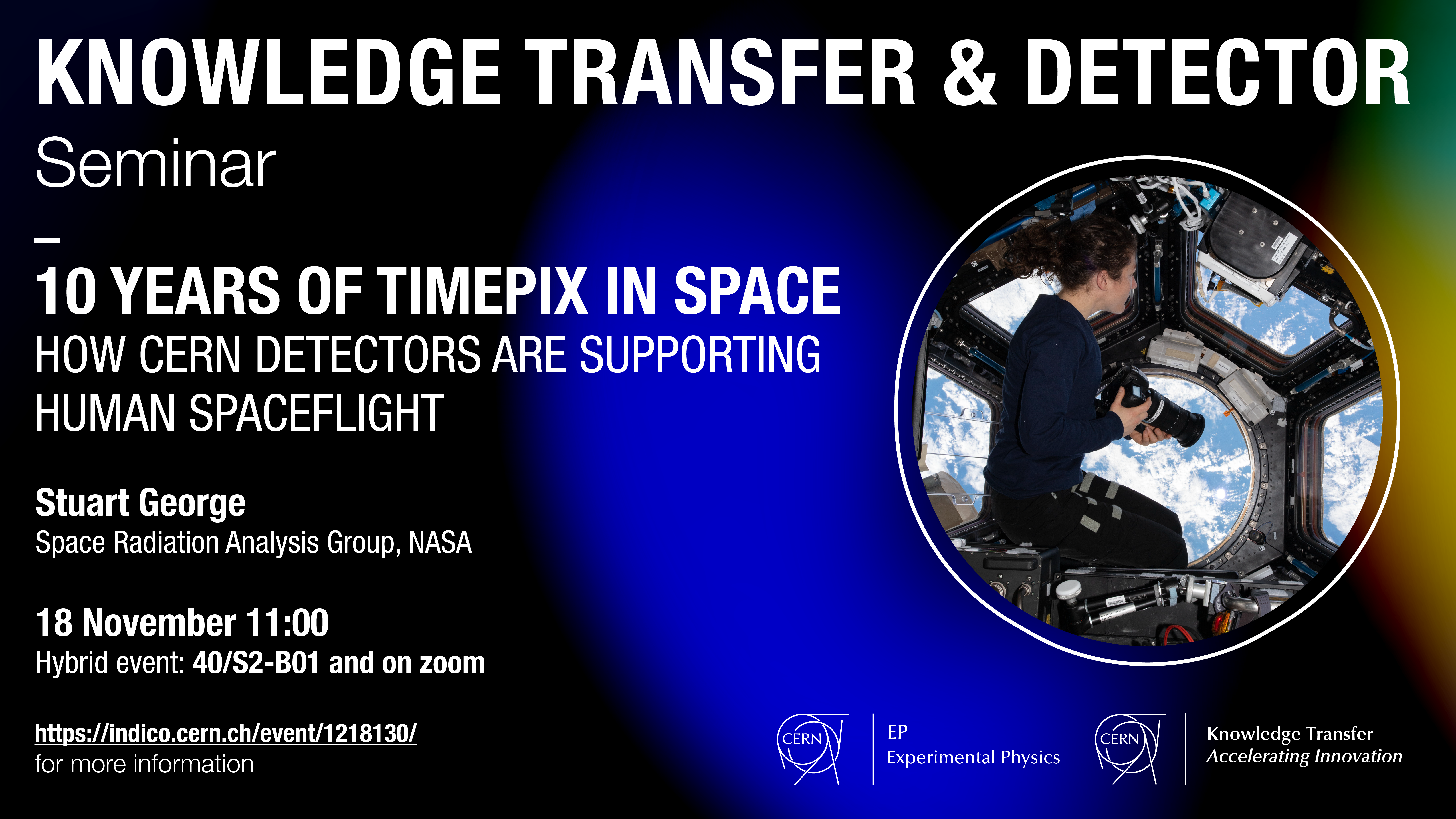Starting with a tech demo flight in 2012 CERN designed Timepix hybrid pixel detectors are now ubiquitous in NASA human space flight as charged particle detectors.
This seminar reviews the space radiation environment and its relevance to human health, what sort of capabilities are needed from radiation instrumentation in space and how hybrid pixel detectors meet and exceed those goals.
We discuss key results from the 10 year history of Timepix on the International Space Station through to the current network of 11 instruments spread throughout the ISS as well as the flight of a Timepix based instrument on the Orion ETF-1 mission.
We review how Timepix based instruments are being used to support near future spaceflight efforts including the Artemis 1 lunar mission, the Biosentinel deep space radiation biology experiment, the Peregrine lunar lander and the private SpaceX Polaris Dawn mission all of which are scheduled to fly in the next six months.
Finally we discuss the medium and longer term future for Timepix detectors as part of NASA space flight efforts, including continued support of the Artemis manned lunar missions, deployments on the Lunar Gateway and NASA Human Landing system (SpaceX starship) as well as current efforts to develop next generation Timepix sensors for space weather early warning, planetary science and space biology applications.
Speaker Biography
Dr. Stuart George works for the Space Radiation Analysis Group at NASA Johnson Space Center in Houston, USA where he serves as science lead for a number of NASA instruments and project lead for the Compact Electron Proton Spectrometer detector. Dr. George completed his Ph.D. at the University of Wollongong in 2016 and held a Marie Curie Fellowship at CERN from 2012-2015.

